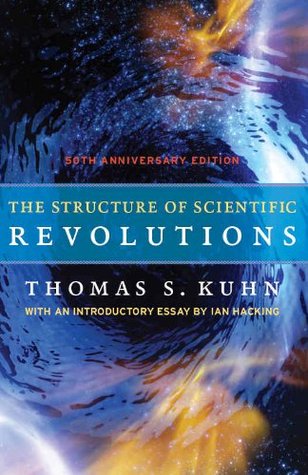More on this book
Community
Kindle Notes & Highlights
Both history and acquaintance made me doubt that practitioners of the natural sciences possess firmer or more permanent answers to such questions than their colleagues in social science. Yet, somehow, the practice of astronomy, physics, chemistry, or biology normally fails to evoke the controversies over fundamentals that today often seem endemic among, say, psychologists or sociologists.
my most fundamental objective is to urge a change in the perception and evaluation of familiar data,
if I am right that each scientific revolution alters the historical perspective of the community that experiences it, then that change of perspective should affect the structure of postrevolutionary textbooks and research publications.
that the concept of development-by-accumulation assigns to them. As chroniclers of an incremental process, they discover that additional research makes it harder, not easier, to answer questions like: When was oxygen discovered?
Out-of-date theories are not in principle unscientific because they have been discarded.
they attempt to display the historical integrity of that science in its own time. They
Observation and experience can and must drastically restrict the range of admissible scientific belief, else there would be no science. But they cannot alone determine a particular body of such belief. An apparently arbitrary element, compounded of personal and historical accident, is always a formative ingredient of the beliefs espoused by a given scientific community at a given time.
research as a strenuous and devoted attempt to force nature into the conceptual boxes supplied by professional education.
Its assimilation requires the reconstruction of prior theory and the re-evaluation of prior fact, an intrinsically revolutionary process that is seldom completed by a single man and never overnight.
that their vocabulary impels them to view as an isolated event.
“Truth emerges
more readily from error than from confusion.”
the thirteenth century Alfonso X could proclaim that if God had consulted him when creating the universe, he would have received good advice.
root of that crisis can be traced to the late seventeenth century when a number of natural philosophers, most notably Leibniz, criticized Newton’s retention of an updated version of the classic conception of absolute space.
These three examples are almost entirely typical. In each case a novel theory emerged only after a pronounced failure in the normal problem-solving activity.
that breakdown and the proliferation of theories that is its sign occurred no more than a decade or two before the new theory’s enunciation.
As in manufacture so in science—retooling is an extravagance to be reserved for the occasion that demands it. The
The decision to reject one paradigm is always simultaneously the decision to accept another, and the judgment leading to that decision involves the comparison of both paradigms with nature and with each other.
To reject one paradigm without simultaneously substituting another is to reject science itself.
Scientists have not generally needed or wanted to be philosophers.
Almost always the men who achieve these fundamental inventions of a new paradigm have been either very young or very new to the field whose paradigm they change.
scientific revolutions are here taken to be those non-cumulative developmental episodes in which an older paradigm is replaced in whole or in part by an incompatible new one.
In increasing numbers individuals become increasingly estranged from political life and behave more and more eccentrically within
Cumulative acquisition of unanticipated novelties proves to be an almost non-existent exception to the rule of scientific development.
wrong. Often the importance of the resulting discovery will itself be proportional to the extent and stubbornness of the anomaly that foreshadowed it.
By now that point too is virtually a tautology. Without commitment to a paradigm there could be no normal science.
They are the source of the methods, problem-field, and standards of solution accepted by any mature scientific community at any given time. As a result, the reception of a new paradigm often necessitates a redefinition of the corresponding science.
Therefore, when paradigms change, there are usually significant shifts in the criteria determining the legitimacy both of problems and of proposed solutions.
competing paradigms regularly raises questions that cannot be resolved by the criteria of normal science.
extent, as significant as it is incomplete, that two scientific schools disagree about what is a problem and what a solution, they will inevitably talk through each other when debating the relative merits of their respective paradigms.
For example, since no paradigm ever solves all the problems it defines and since no two paradigms leave all the same problems unsolved, paradigm debates always involve the question: Which problems is it more significant to have solved?
Looking at the moon, the convert to Copernicanism does not say, “I used to see a planet, but now I see a satellite.” That locution would imply a sense in which the Ptolemaic system had once been correct. Instead, a convert to the new astronomy says, “I once took the moon to be (or saw the moon as) a planet, but I was mistaken.” That sort of statement does recur in the aftermath of scientific revolutions.
As a result of what is perhaps our fullest example of a scientific revolution, the same chemical manipulations assumed a relationship to chemical generalization very different from the one they had had before.
(he himself called it the “new system of chemical philosophy”),
clearly, most of them, which were deliberately selected for their familiarity, have customarily been viewed not as revolutions but as additions to scientific knowledge.
They address themselves to an already articulated body of problems, data, and theory,
stable outcome of past revolutions


